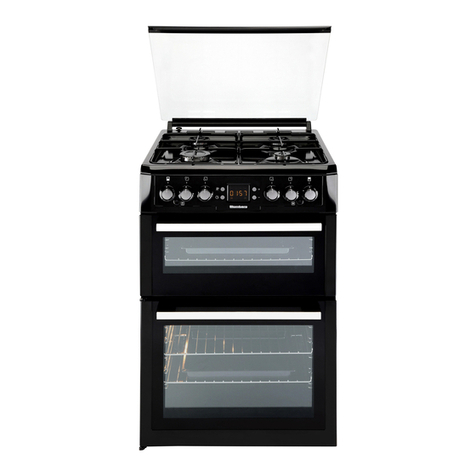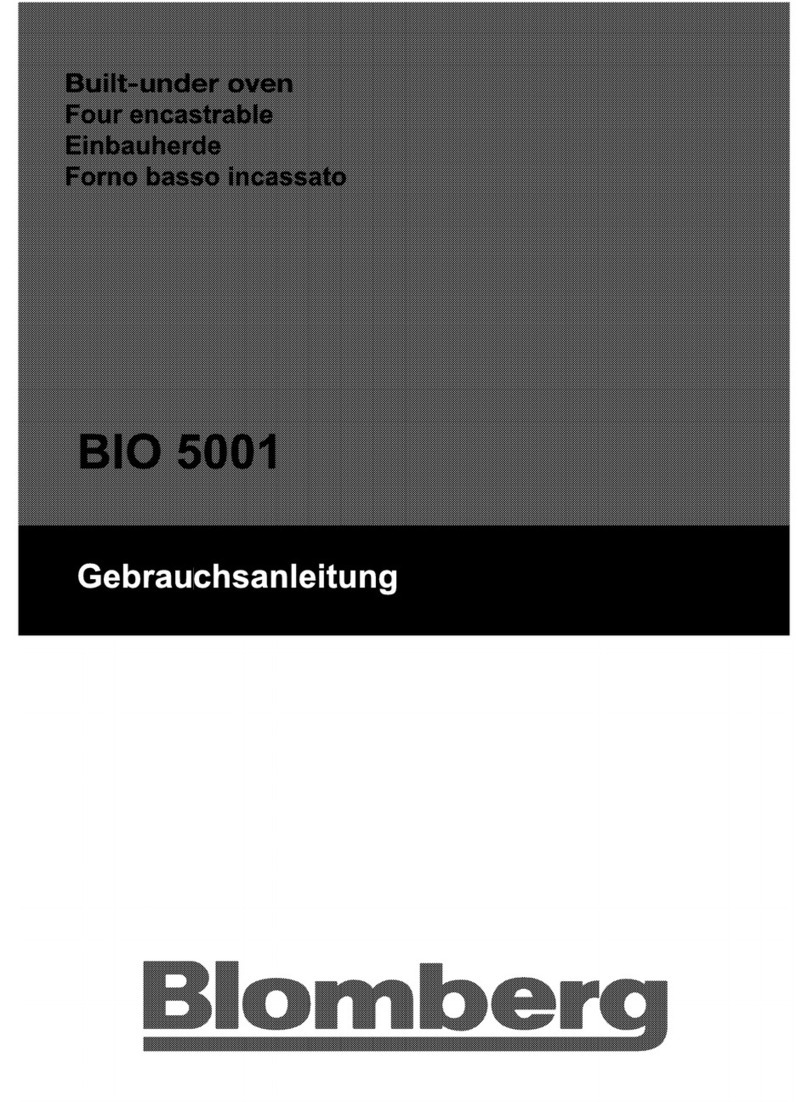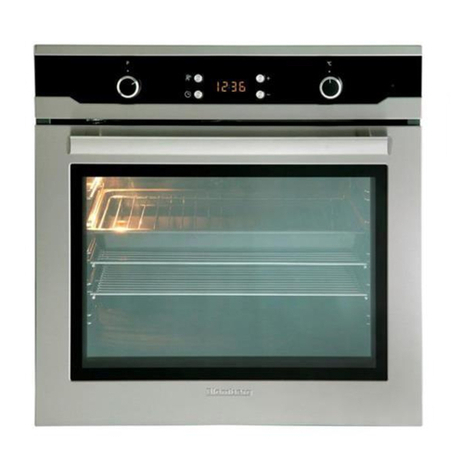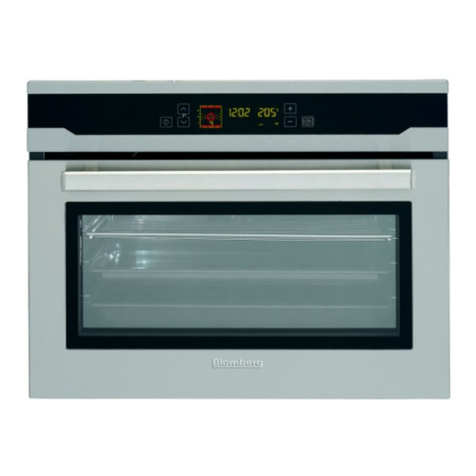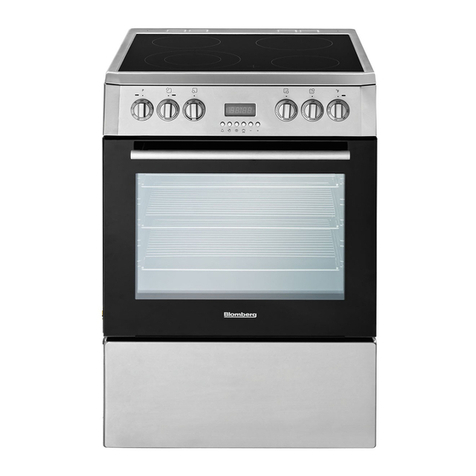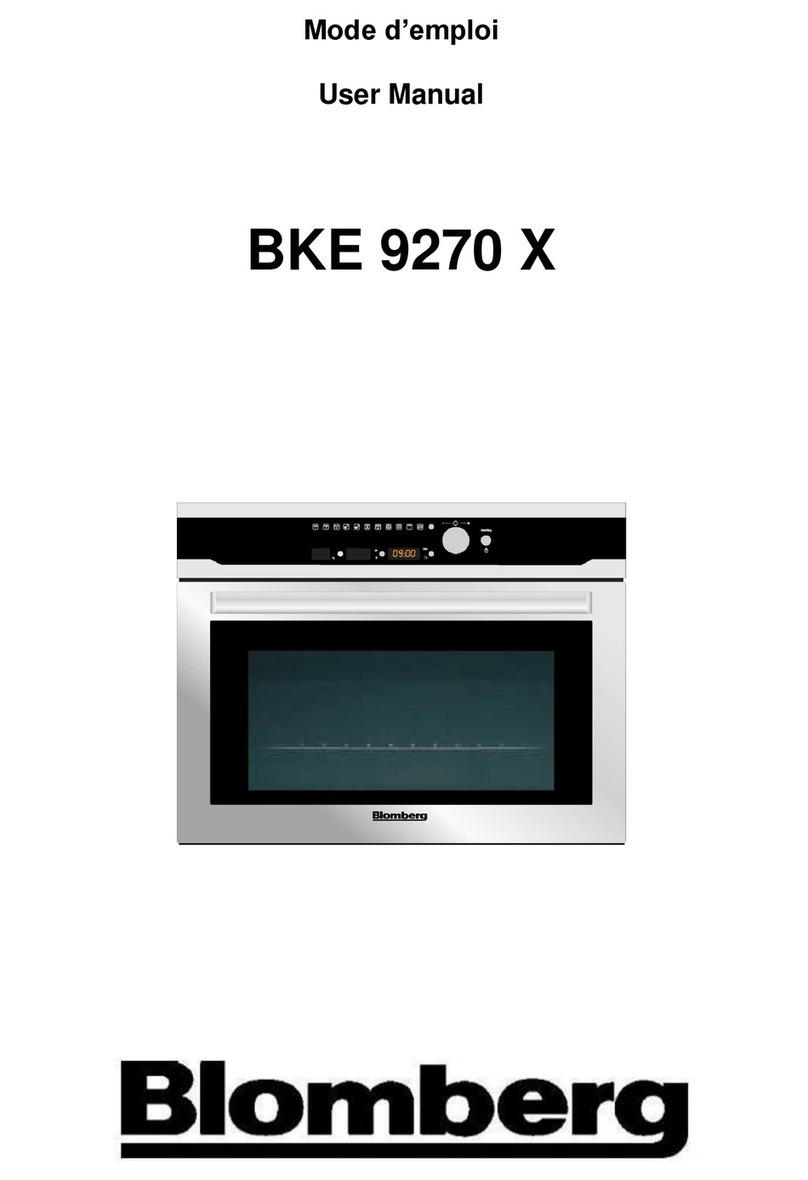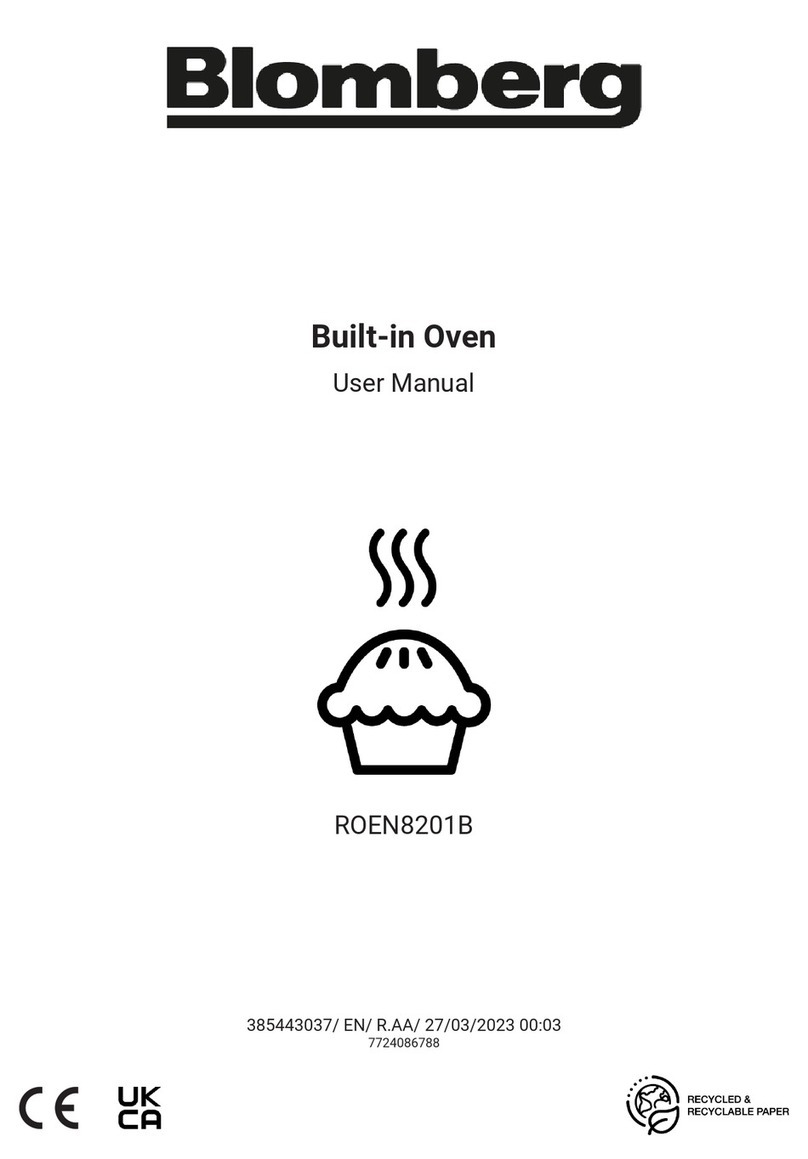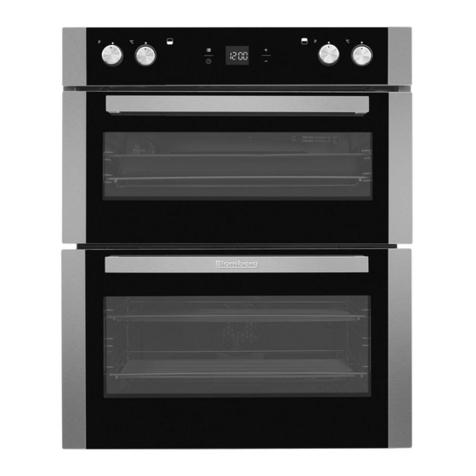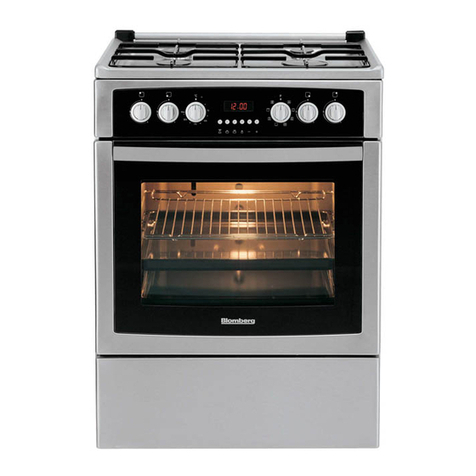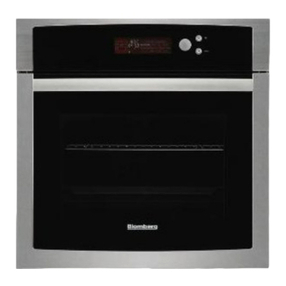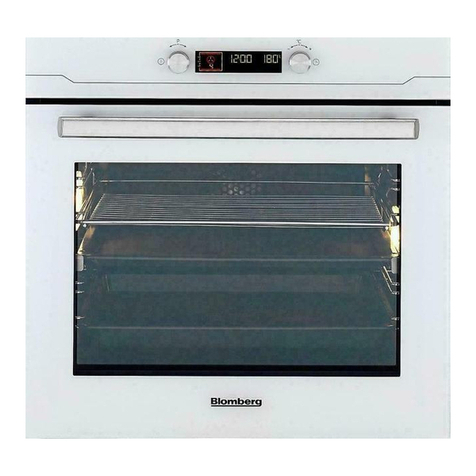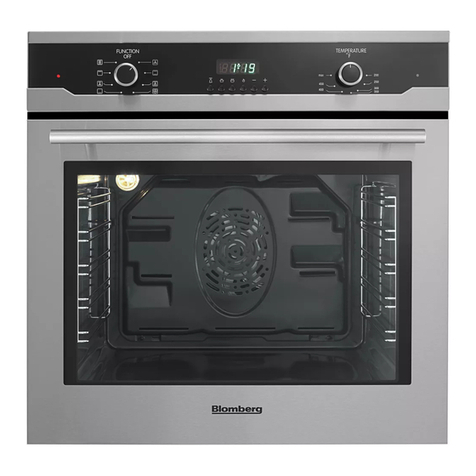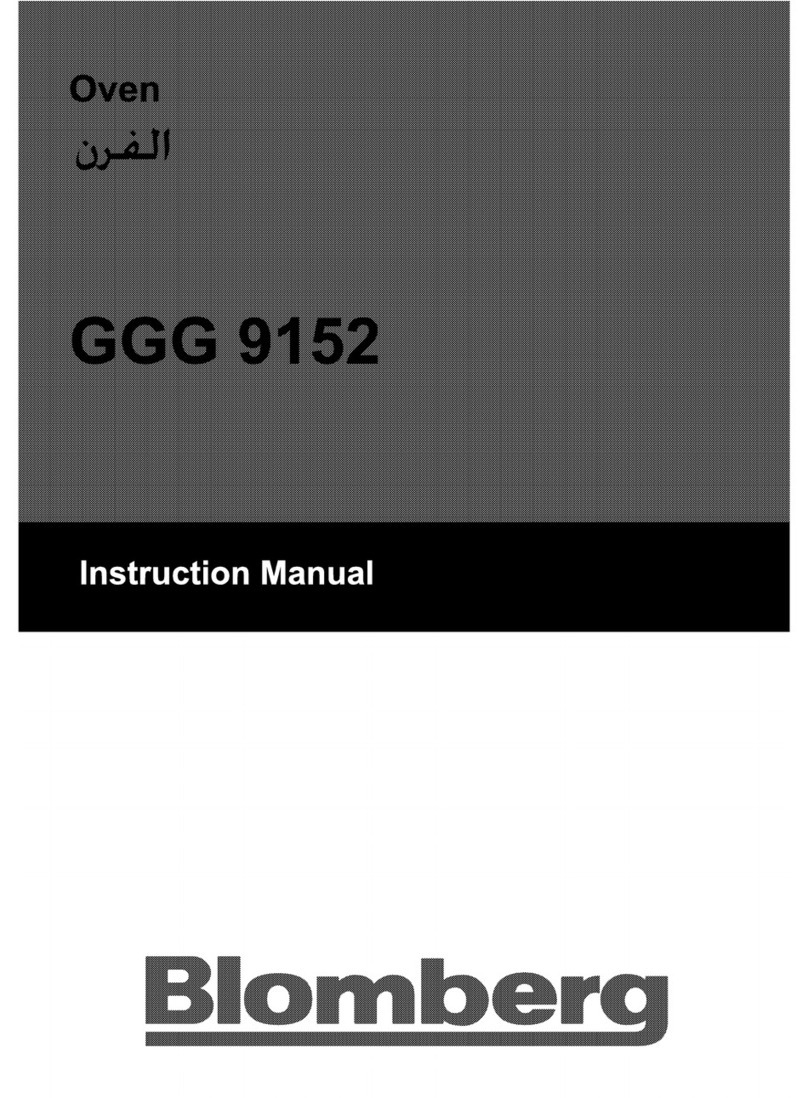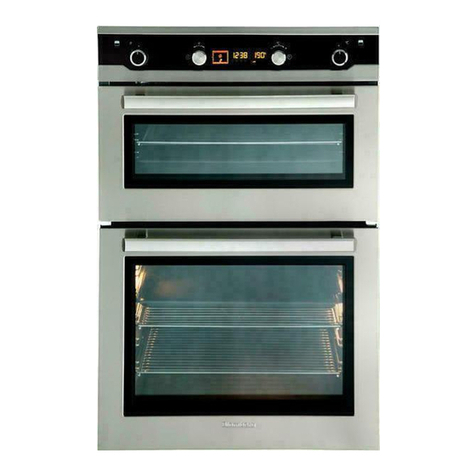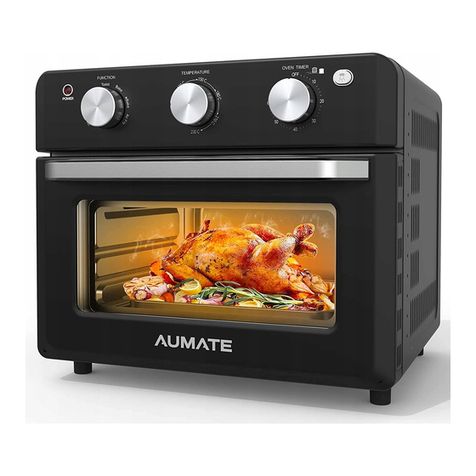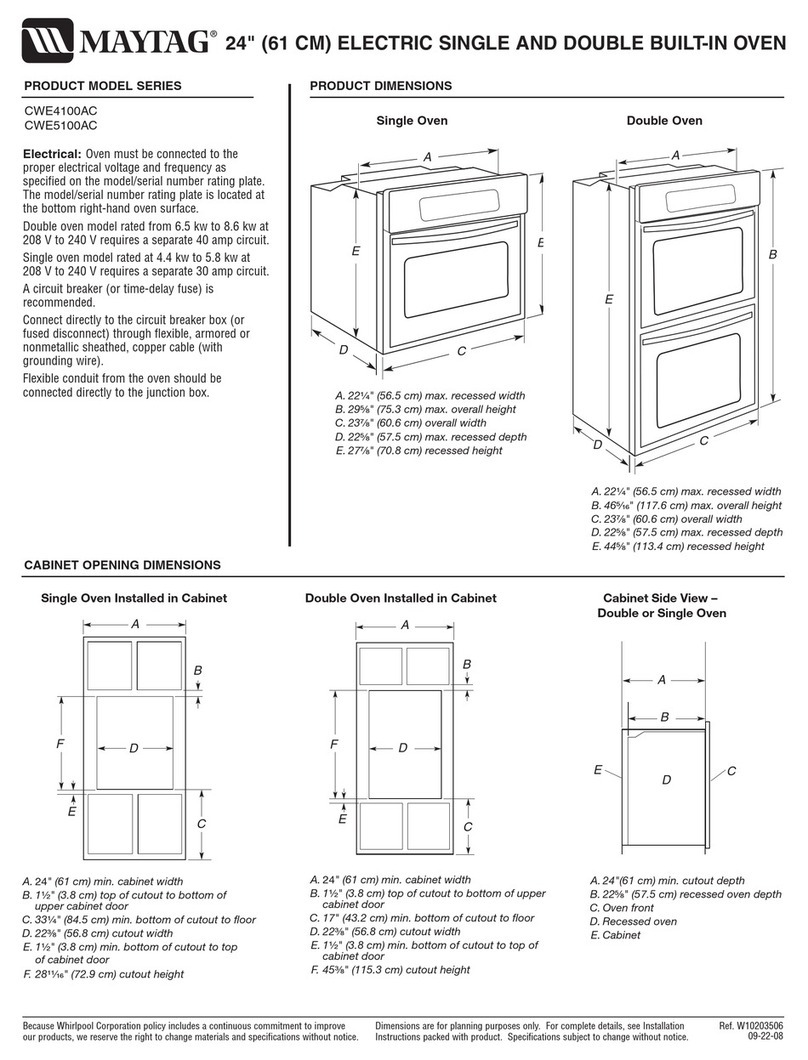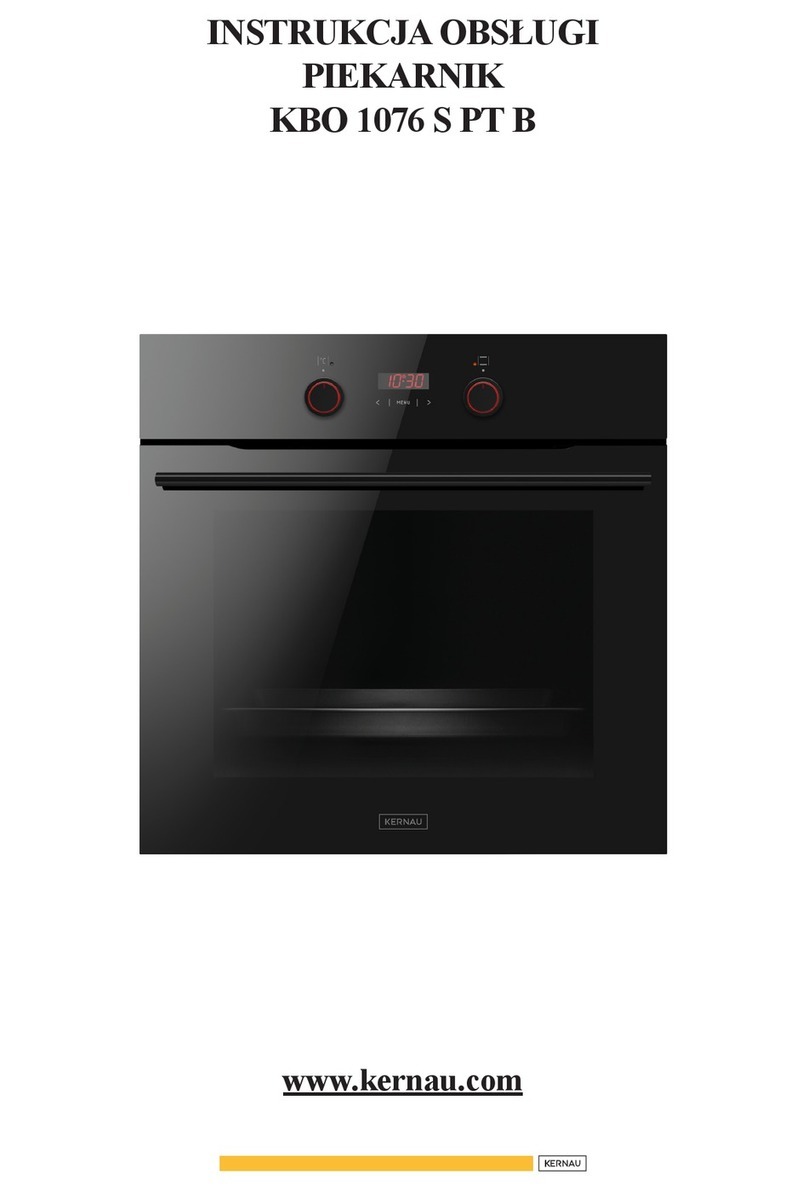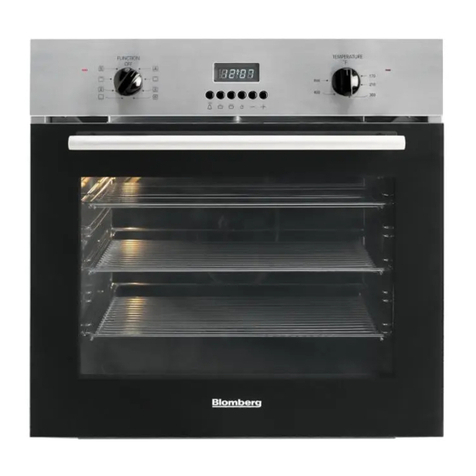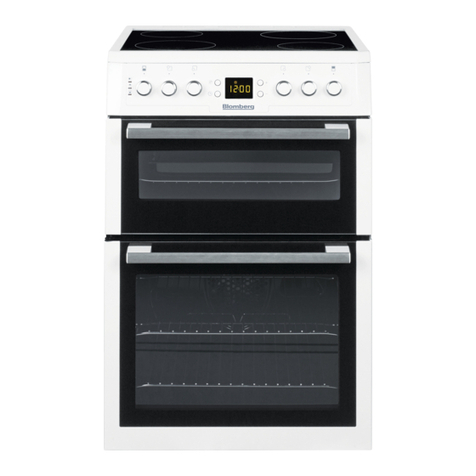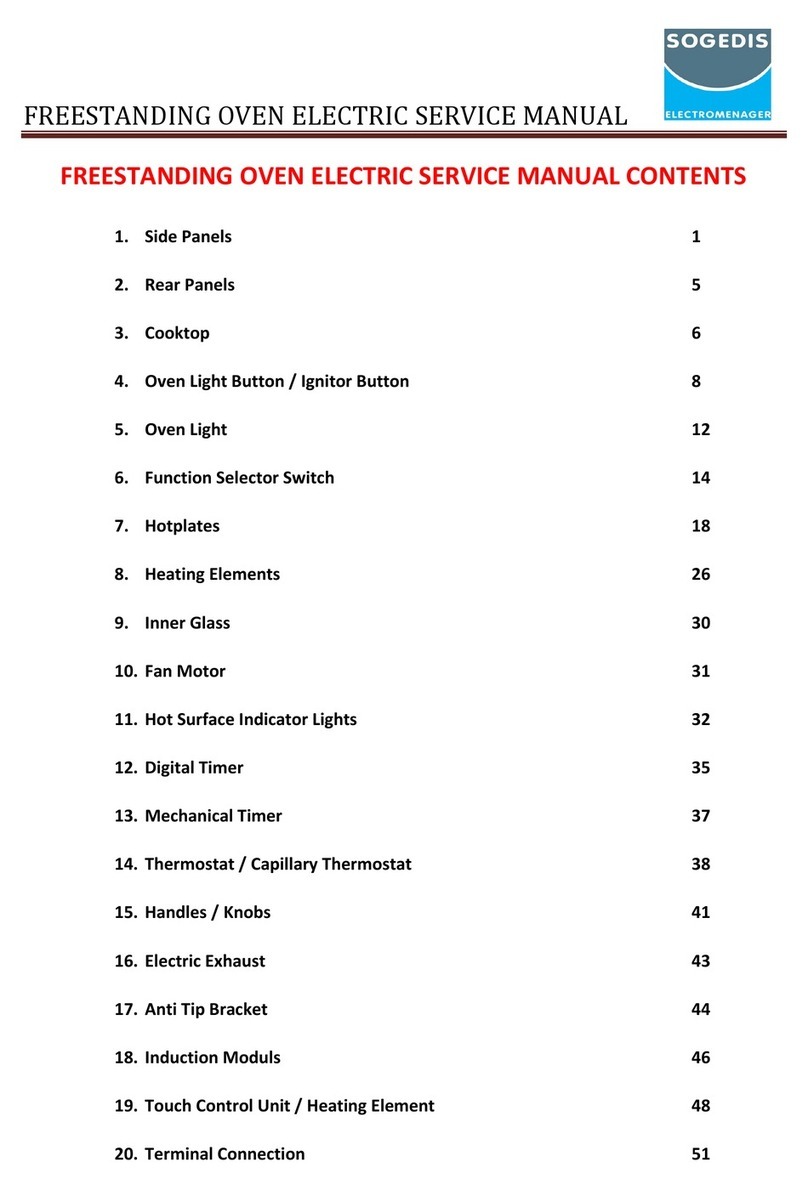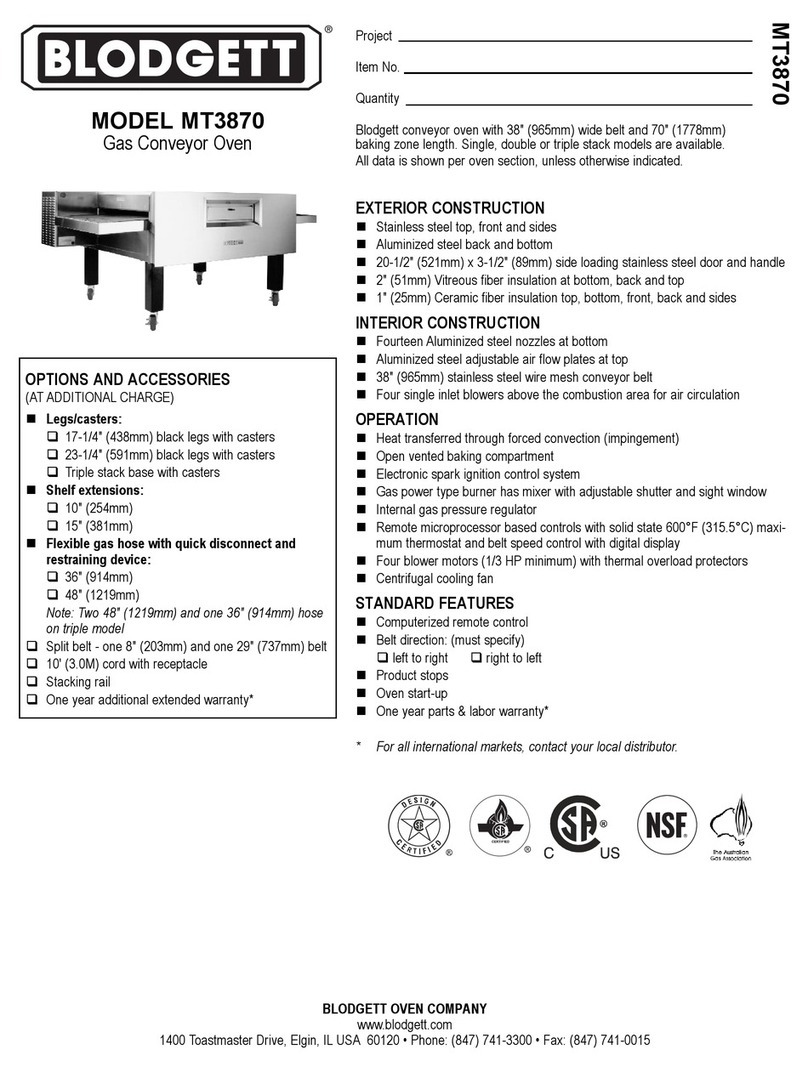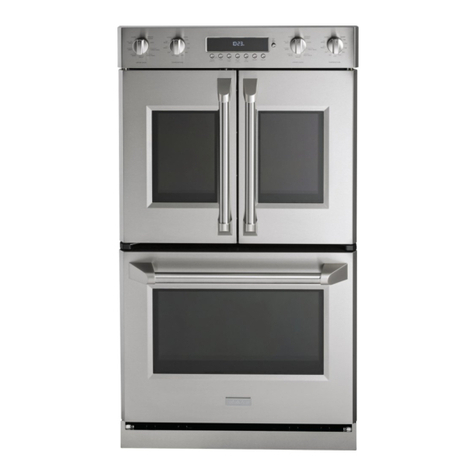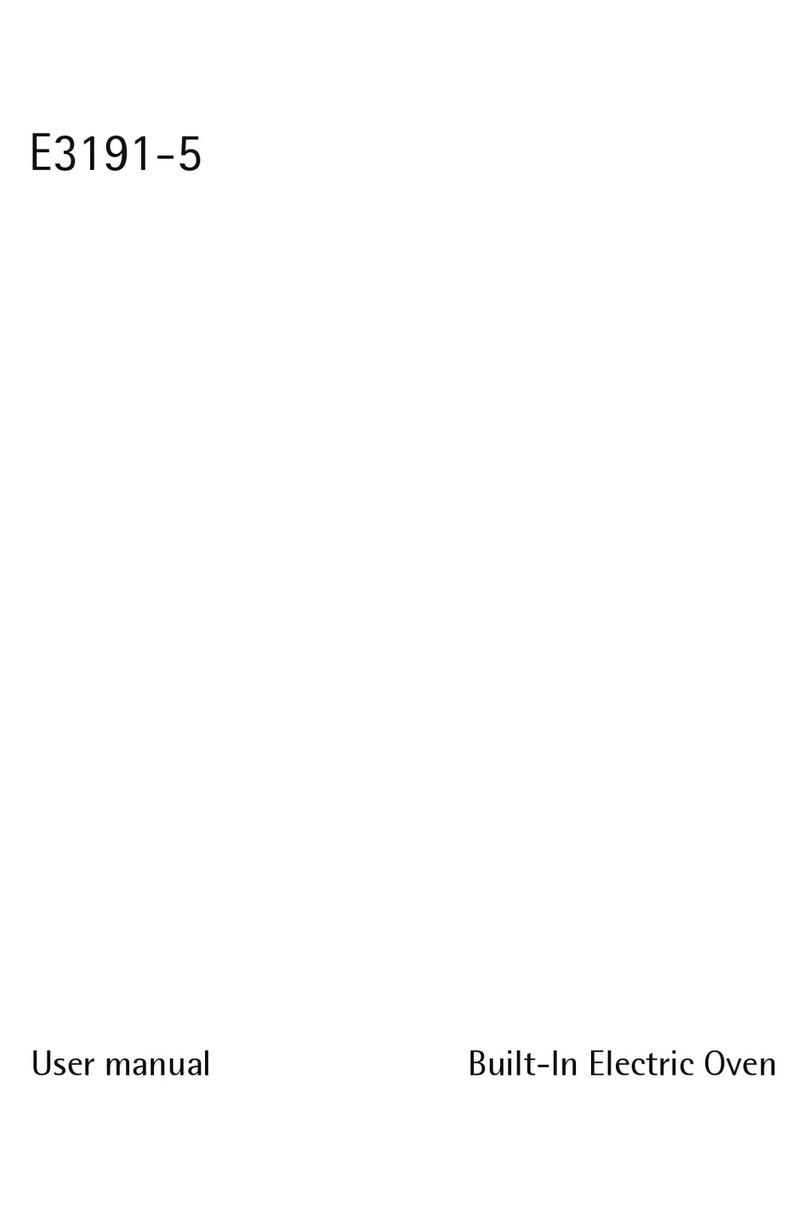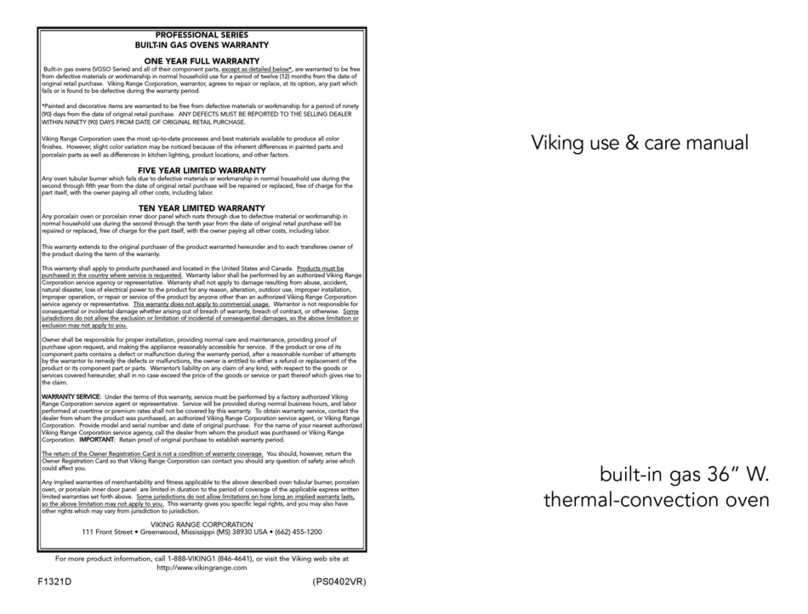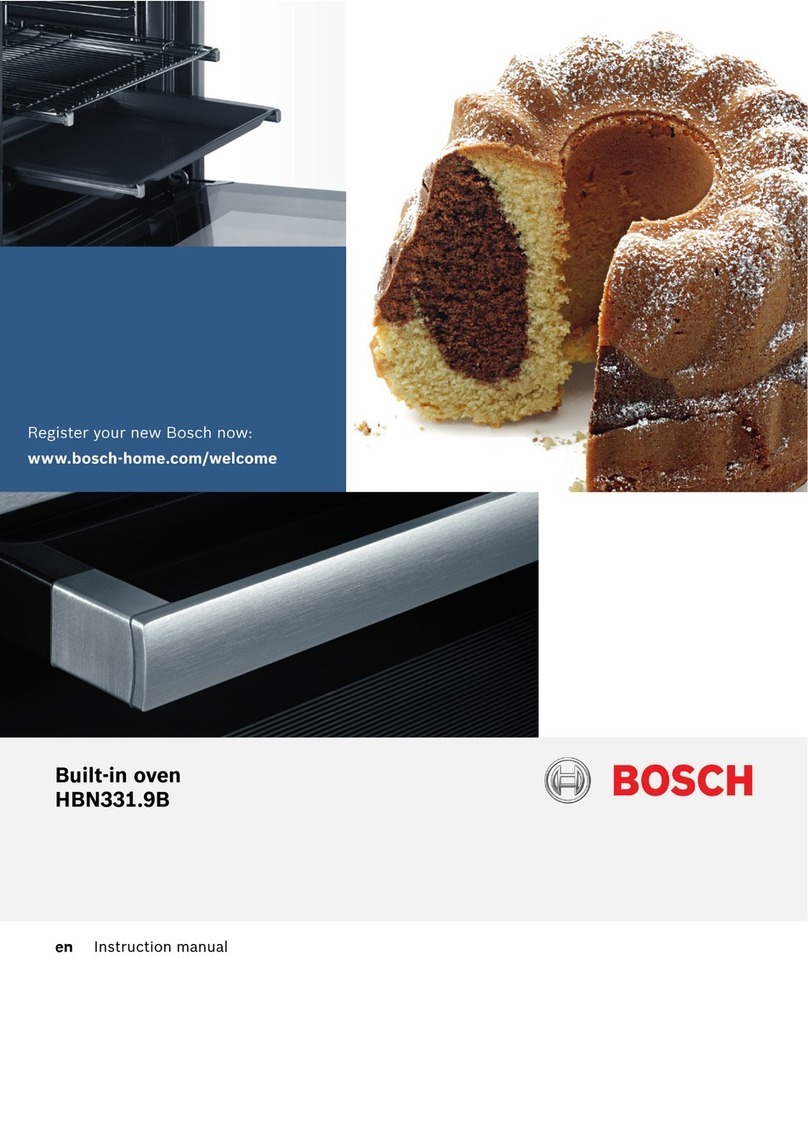ELECTRONIC CONTROL. The control consists of a main power board and a display board. An
additional power board is derived from the main one removing the power supply parts. It has all
the functions of the main one to drive the lower cavity in a double oven. The main power board
provides the voltages to the other boards (GND, -5V and -24V for the relays to the lower power
board only).
The three boards share a I2C communication bus (Data and Clock).
COOKING MODE & TEMPERATURE SELECTORS. All ovens have one selector for the cooking
modes and one for the set temperature, per every cavity. The cooking mode selector has 4
positions for thermal cavities, 9 for multifunction ones.
TEMPERATURE SENSOR. There is one Pt1000 sensor per every oven (two in a double, of
course), fixed on the rear wall outside the cavity.
HEATING ELEMENTS. Four heaters are available in multifunction ovens while the ring element is
missing in the thermal ones. They are combined together in different ways, depending on the
selected mode, but the maximum power never overtakes 3500W.
CONVECTION FAN. This fan is available in multifunction cavities; it works always at the same
speed in all convection modes, self-clean and dehydrate.
COOLING FAN SYSTEM. A cooling fan keeps the internal parts temperature within acceptable
values, and removes smoke from the cavity through the catalyser. A resistor connected in series
reduces the voltage on the fan motor and consequently the fan speed. There is a 70°C by-pass
thermostat that shorts this resistor when the temperature overtakes the threshold, switching the
cooling fan into its full speed. This normally occurs during self-clean only.
OVEN LIGHTS. Halogen is 120V. They turn on when a cooking mode starts or when the door is
open. It’s also possible to switch the lights on manually by pressing the light button.
DOOR LATCH SYSTEM. A motor actuates the latch mechanism to lock or unlock the door. The
motor always rotates in the same direction, and it’s the mechanism that determines the locking or
unlocking phases. They take about the same time to complete the half cycle. The door micro
switch is checked every time the latch starts to verify that the door is actually closed. If the door is
open, the latch icon flashes until the door is closed. A changeover micro switch placed right on the
motor shaft and actuated by a 180° cam provides the electronics with the latch position
information
